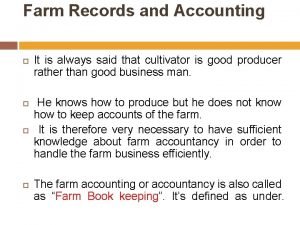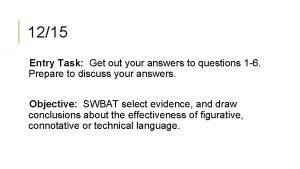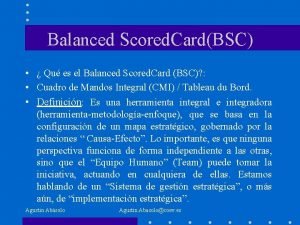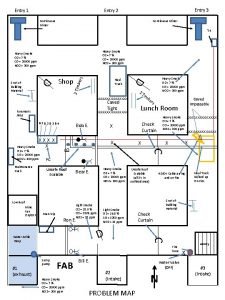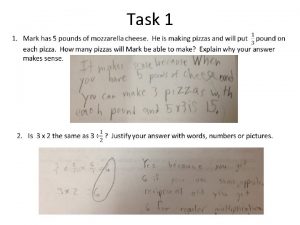Entry Task Joe scored a 79 81 93














- Slides: 14

Entry Task Joe scored a 79%, 81%, 93%, 63% and a 88% on his tests. What is his average test score?

1 -4 SIMPLE MOVING AVERAGES OBJECTIVES Understand how data is smoothed. Calculate simple moving averages using the arithmetic average formula. Calculate simple moving averages using the subtraction and addition method. Graph simple moving averages using a spreadsheet. Slide 2

Key Terms smoothing techniques – statistical tools that allow an investor to reduce the impact of price fluctuations and focus on patterns and trends � simple moving average (SMA) – an avg. over a given time � arithmetic average (mean) - average � lagging indicators – moving averages, because they use past indicators � fast moving average – a graph w/ a shorter time interval � slow moving average - a graph w/ a longer time interval � Slide 3

How can stock data be smoothed? �What factors might contribute to the fluctuation of stock market prices? Slide 4

The closing prices for 10 consecutive trading days for a particular stock are shown. Calculate the 5 -day SMA and plot both the closing prices and the averages on a graph. Example 1 Chart Title 37, 5 37 36, 5 36 35, 5 35 34, 5 34 33, 5 33 Day 1 Day 2 Day 3 Day 4 Day 5 Day 6 Day 7 Day 8 Day 9 Day 10 Series 1 Series 2 Slide 5

CHECK YOUR UNDERSTANDING Closing prices for 10 consecutive trading days were $55, $60, $62, $48, $40, $42, $45, $46, $43, and $49. Calculate the 5 -day SMA. Plot both the closing prices and the averages on a graph. $53 $50. 40 $47. 40 $44. 20 $43. 20 $45. 00 Slide 6

Example 2 Use the subtraction and addition method to determine the 4 -day SMA for the following closing prices. $121, $122, $120, $119, $124, $128, $126 Slide 7

CHECK YOUR UNDERSTANDING Use the subtraction and addition method to determine the 3 -day SMA for the closing prices $28, $31, $37, $38, and $35. Slide 8

Graph simple moving averages using a spreadsheet Slide 9

EXAMPLE 3 Use a spreadsheet to calculate the 5 -day SMA of the closing prices for 10 consecutive trading days. Open up the excel doc called 5 day SMA on the S drive in my Outbox. Slide 10

CHECK YOUR UNDERSTANDING Add column D to the spreadsheet to calculate the 3 -day SMA. In what cell do you start? What formula do you use? Slide 11

EXAMPLE 4 The graph shows the closing prices for 30 consecutive trading days. It also charts the 7 day and 21 -day simple moving averages. What signal might the graphs give an investor? Slide 12

CHECK YOUR UNDERSTANDING Suppose that on the 35 th trading day, the 21 -day SMA graph rises above the 7 -day graph. What might that indicate? Sell: The slow moving graph overtook the fast moving one. This can indicate a reversal of the trend. The buyer should consider selling. Slide 13

Assignment �P. 27 #1, 2, 3, 6, 10






